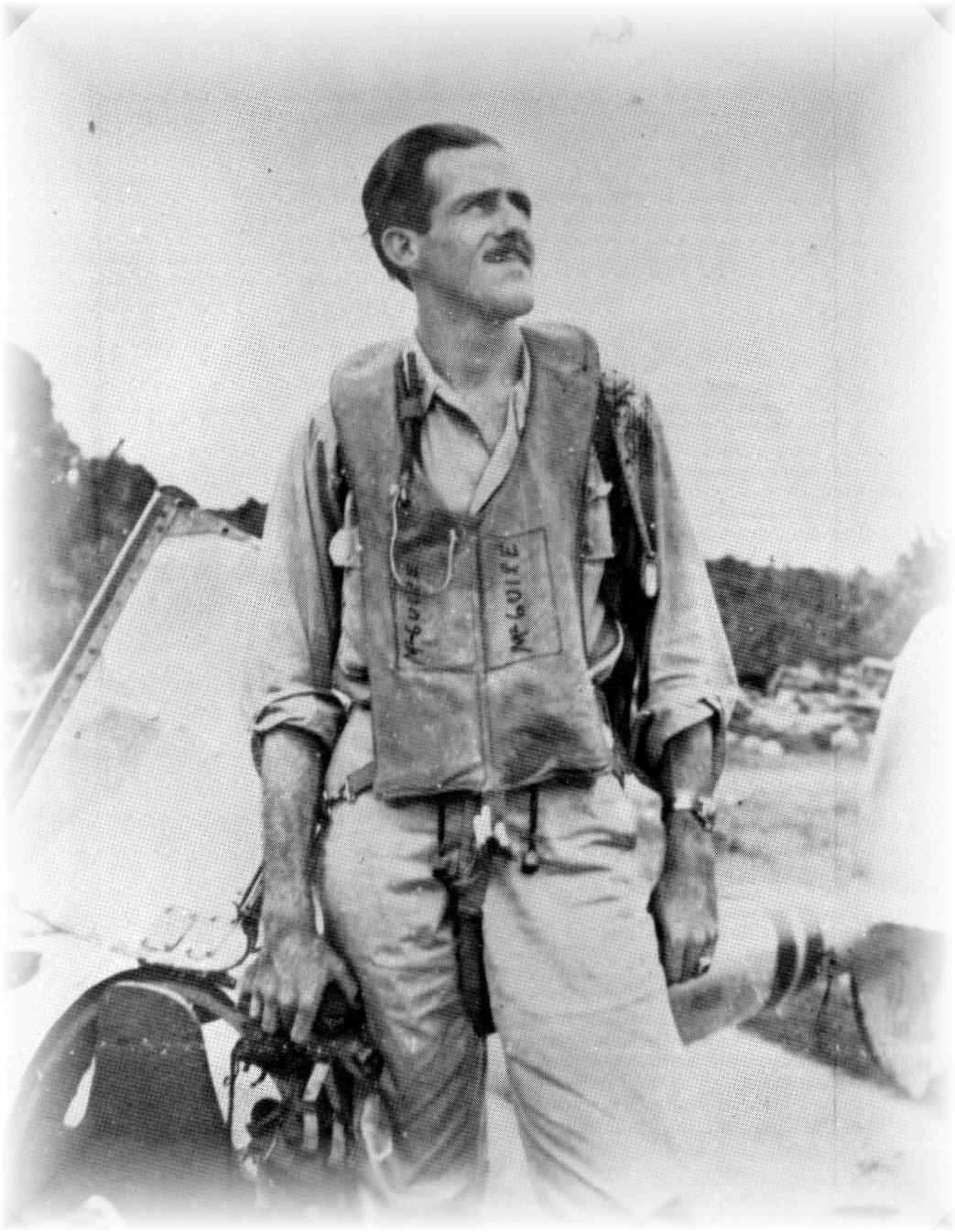
| T.B. McGuire Jr. |
 |
| |
Five months later, the 5th Air Force decided to create an entire group, the 475th Fighter Group, of P-38 fighters, at the behest of its commander, the legendary Lt. Gen. George Kenney. Because he was a natural leader and experienced pilot, McGuire was among those chosen to form the new group. He was assigned to the 431st Fighter Squadron. On August 18, 1943, McGuire was part of a group flying top cover for bombers striking at Wewak, New Guinea. Nearing their target, the fighters were attacked by Japanese aircraft. During the battle, McGuire shot down two Ki-43 “Oscars” and one Ki-61 “Tony”. On the following day, near the same location, he downed two more “Oscars”. This established him as an air ace in two days, after undergoing a frustrating year of apprenticeship with no opportunities to engage the enemy. Over time, McGuire became one of the finest pilots ever to don an Air Forces uniform. His skill at maneuvering the large twin-engineered P-38 was legendary, and he eventually became one of the top scoring airmen in Air Force history. Had it not been for periodic illnesses and heavy administrative duties as Commander, 431st Fighter Squadron, McGuire would surely have become the United States’ leading ace. His short life was full. Charles Lindbergh bunked with him and flew as his wingman on a few highly unusual if unauthorized missions. McGuire even wrote a highly prized book on combat tactics for the entire 5th Air Force. On 25-26 December, 1944, McGuire reached the zenith of his career—downing at least seven Japanese fighter aircraft over two days in Luzon, Republic of the Philippines. He was two victories away from Maj. Richard I. Bong, the USAAF’s all-time aerial victory leader. However, after cheating death many times on his way to 38 aerial victories, McGuire’s tremendous achievement soon came to a close. On January 7, 1945, McGuire was leading a group of four P-38s over a Japanese-held airstrip, Fabrica aerodrome, Negros Island. After descending through cloud cover, McGuire’s flight attacked a lone Ki-43 “Oscar” they discovered. Unfortunately, the pilot of this aircraft was an instructor pilot with thousands of hours in that type of aircraft, and kept McGuire and his wingman at bay. Another aircraft, a Ki-84 “Frank” appeared on the scene from a nearby airstrip, and locked onto McGuire. In the turning battle that ensued, McGuire’s P-38 presumably entered into a low-speed stall and crashed. He was killed on impact. McGuire was awarded the Medal of Honor posthumously for his outstanding duty performance, especially in the 25-26 December missions. McGuire’s other decorations included the Distinguished Service Cross with three devices, two Silver Stars, six Distinguished Flying Crosses, three Purple Hearts, and 15 Air Medals – all before he was 25. He was a special man. McGuire AFB was dedicated to his everlasting honor in January, 1948. | ||
 | ||